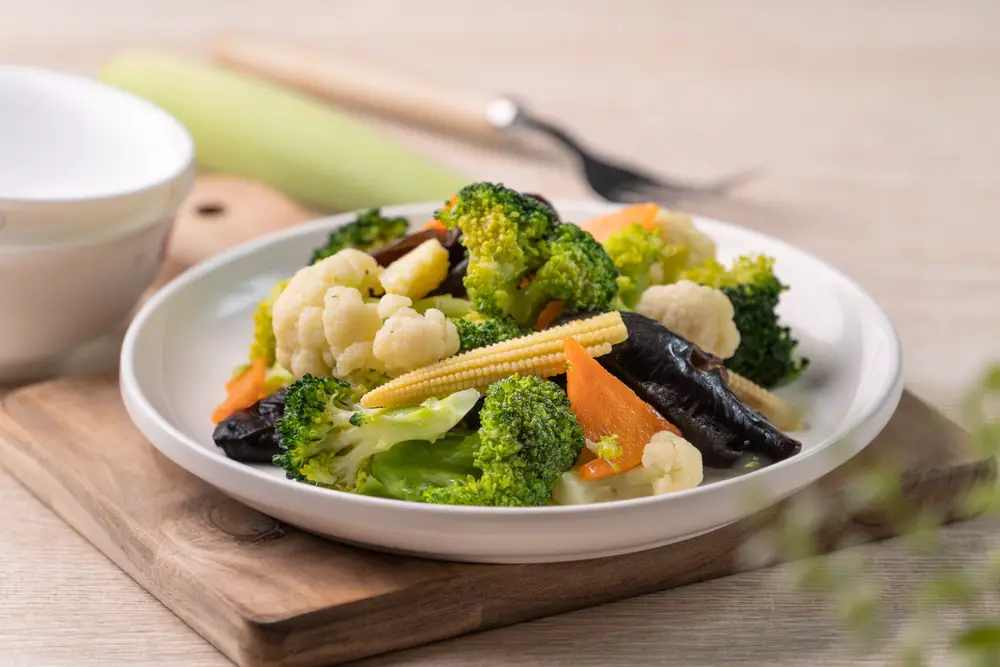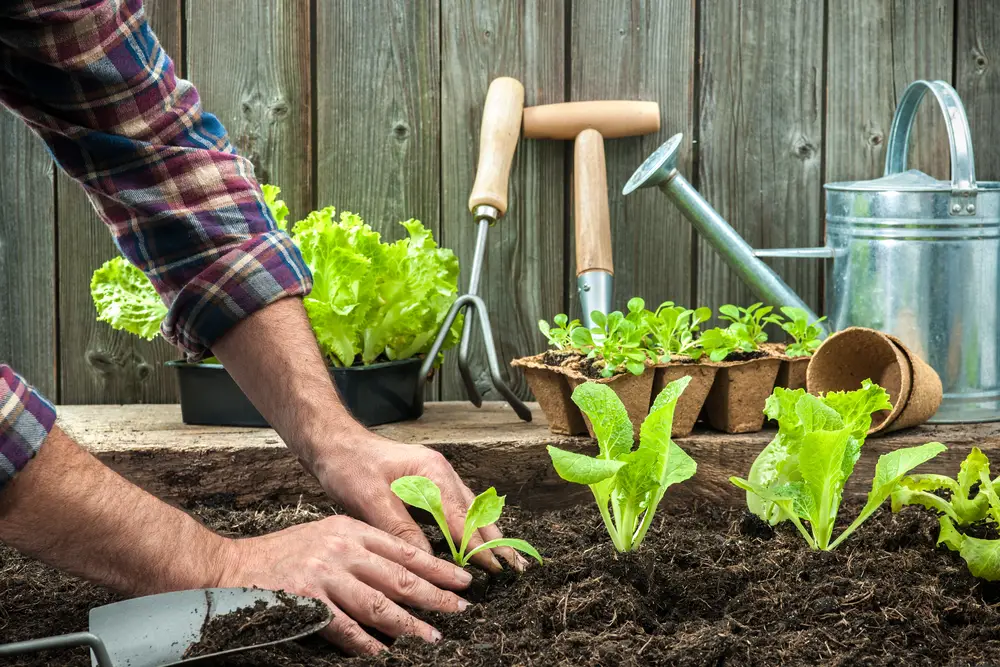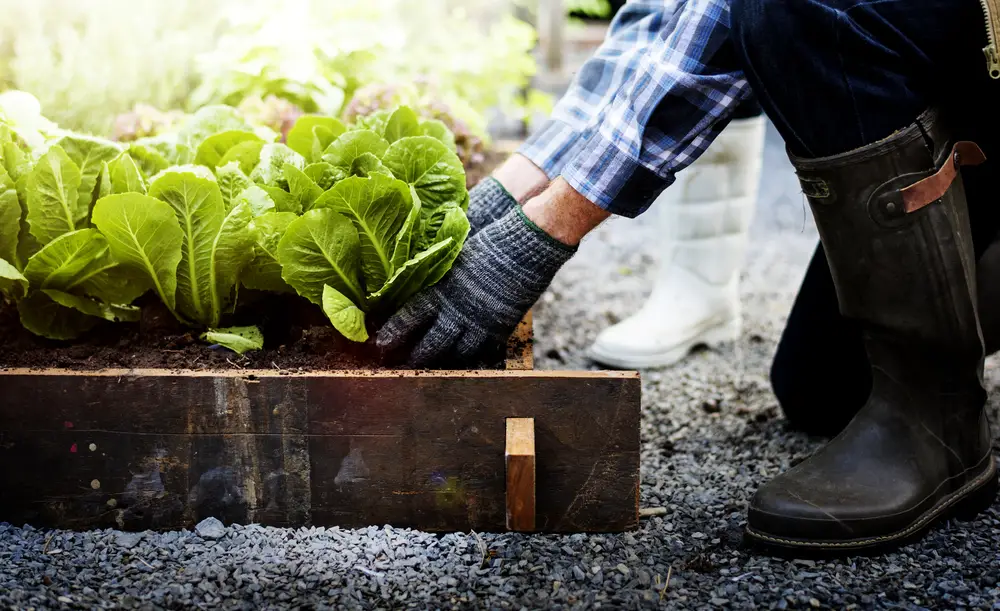Summary
Vegetable gardens are worth it due to their nutritional, exercise, mental health, environmental, and community benefits. Nutritionally, various vegetables provide nutrients necessary for your health. Vegetable gardening (and other types of gardening) always provides an opportunity for physical exertion. It gets you outside and is relaxing. It also reduces your trips to the store and products you buy and offers you opportunities to meet others, such as by joining a community garden.
Growing a vegetable garden yields innumerable benefits, and you’ll also end up with tasty vegetables. Determining the relative value of a food garden depends on what you are measuring, though. If your cost/benefit analysis is financially focused or strictly time-oriented, you may be better served buying your produce, but research shows there are significant reasons to consider growing that garden anyway.
As a longtime gardener at home and in community spaces (schools, long-term care facilities, community centers, hospitals, and even an addiction treatment farm), I’ve taught people of all ages to grow their own vegetables, and I’ve seen countless examples of how people benefit by having their own vegetable gardens.
And it’s not just about the food you harvest, though that is its own sweet joy.
It Has Nutritional Benefits

It’s no secret a varied diet of fresh food provides you with health benefits such as the following:
- Increased energy
- Bolstered immunity
- Disease prevention
- Quicker recovery when ill
- And more.
Learning to grow your own vegetables is a natural and important step in this direction. Homegrown and local produce like vegetables are often more nutrient-dense than those grown and shipped for sale in stores.
To sell produce this way, growers have to harvest it prematurely, preventing it from spoiling before it gets to market and eventually to your table.
Growing your own produce or buying locally means enjoying it when it’s fully ripe. This also means getting to eat them shortly after harvest when they’re fresh and not at risk of decay.
Additionally, growing your own vegetables means knowing they’re not treated with hazardous chemicals such as pesticides and insecticides. You also get to choose what vegetables you grow rather than relying on a grocery store and what they have in stock.
You’ll even have the opportunity to try new vegetables you’ve never had before.
They’ll taste better, too.
Lastly, research shows growing a garden improves your eating habits. In other words, studies have shown a relationship between vegetable gardening and your willingness to try a wider variety of vegetables. You’ll also eat more of them, too.
Some Vegetables And Their Nutritional Benefits
Some of the vegetables you might consider planting in your first garden are:
- Spinach
- Beets
- Carrots
- Peas
- Kale
- Radishes
Let’s start with spinach.
Spinach
Spinach grows quickly and prefers cooler temperatures. Within approximately a month of seeding it, you can be harvesting. I typically plant it early and again in late summer/early autumn. It is an excellent source of calcium and iron as well as vitamins A, C, and K. It is a versatile green, and I like to blend it into smoothies, use it in salad, cook it in savory dishes, or even add it in baking (like muffins).
Beets
Beets mature approximately two months after seeding. I usually grow two or three crops of beets a year, the last staying in the ground and becoming part of my winter garden. Beets are a source of potassium and folate.
I’ve found people either love or hate beets (given their place in my garden, you know which camp I fall into). While some people enjoy juicing them, I like to roast or pickle them to enjoy in salads or make them into soup. Their tops are edible, too, and best picked when they are young. Grab a handful and add to your salads, smoothies, or even just to snack as you work in your garden. Be sure to take only a leaf or two from each plant, or you will stunt the growth of the root!
Carrots
Carrots take a few weeks longer to mature than beets. Once they start growing, they are easy to grow. Carrots will survive throughout the winter as long as their soil doesn’t freeze and their tops are protected.
Some people choose to grow with cold frames because they want to harvest fresh vegetables at home all year long. Though the growth of all plants slows significantly over the winter months, it is possible to achieve in all but the coldest climates.
Carrots are rich in vitamin A in the form of beta-carotene. It turns out that the old adage about carrots being good for your eyes is also true.
You can roast, juice, blend, cook, or eat carrots raw. You can also make carrot cake with them. If you’re a fan of that kind of cake, try making one with fresh carrots at least once.
Carrot tops are also edible! I like to sprinkle them into salads or snack on them as I wait for the first carrots of the season to be ready to eat. Instead of composting the tops one year, I blended them and made a carrot top pesto. Not bad, but it can’t replace basil pesto.
Growing tip: carrots can be finicky to germinate. They require constant moisture (but not too much) for the first two weeks, or you will see what you have planted is patchy. If you are in your garden every day, just ensure they get a sprinkling of water. Alternatively, I have a friend who simply waters them and then covers them with a wood board to prevent evaporation and drying out until they get going (and then removes it). They should be off to a good start in about two weeks with proper care.
Peas
Peas take about two months to mature and stop producing when temperatures reach about 85°F (29.5°C). I plant them in the spring and sometimes again in the autumn. They are a great source of fiber, protein, and vitamins A, C, and K and promote healthy digestive function.
If you are anything like me and my family, you’ll have a hard time resisting eating them on the spot as soon as you find they are ready, so plant a few more than you think you need. When you plant them, ensure you also have a structure to support their growth, as they can get quite tall. A decorative trellis, bamboo stake, rebar, a fence, or whatever you have handy works, but it is best to install when planting to avoid later disrupting their root growth. Peas are delicious, both cooked and raw. I tend to eat them most in the spring and then freeze as many as possible to tuck away in my freezer to enjoy over the winter.
Kale
Depending on your variety, kale is ready to harvest as early as 50 days. Like many greens, it prefers growing in cooler weather, but once established, it isn’t picky and will do well all year. You can start it early and use it as part of a winter garden (which likely has some other essential jobs you’ll need to take care of).
It is a source of vitamins A, C, and K and can help manage cholesterol. If I am going to eat kale raw, I prefer it when it is younger and not so fibrous. I will harvest some earlier in the season for salads and typically add it into sauces, soups, stir-fries, or smoothies to boost nutrients. It freezes well, and I also usually dehydrate some, grind it, and make a green powder to be used when I don’t want to go outside and harvest kale in deep winter. Many people are devoted “kale chip” eaters as well.
Radishes
Radishes are one of my favorite things to grow, and I try to always have some ready for harvest in my home garden. They are ready in a month, are a beautiful color, and have a nice bite.
Rich in Calcium, vitamin C, riboflavin, niacin, folate, and potassium, radishes help manage fungal infections, high blood pressure, and heart disease. They are good, both raw and roasted. Raw for people who enjoy the spiciness and roasted for those who prefer milder flavors.
Whatever you choose to grow in your vegetable garden, it is certain to improve your nutrition and support your health. Most importantly, have fun with it all!
It Has Exercise Benefits

Even a simple vegetable garden requires you to be physically active.
Regardless of what tasks you undertake or how vigorously you move while gardening, it all counts as exercise. Gardening tasks of all kinds are suitable for people at all fitness levels. They can meet the needs of those looking for the most strenuous physical activity, those with physical limitations, and everything in between.
No matter the size or type of your garden, it will require your attention and effort. That means always having some reason to regularly get physical activity.
I’ve seen many gardeners who identify as pretty sedentary become so engaged in what they are doing they are amazed hours have gone by, and they have been happily exercising the whole time. And they are excited to come back and do it again the next day.
One woman at a community garden (which are relatively easy to find if you’re looking for one) I managed shared how her new vegetable garden became a kind of accountability coach for her. She was so invested in making sure her garden was a success that she overcame a long-standing struggle to sustain an exercise regime. Over the course of her growing season, she became physically stronger than she had in years. She was one of the last people doing chores at the garden deep into the autumn that year and one of the first to dig in the following spring.
Another physical benefit of gardening is its effect on our sleep. The more we move, the more ready our bodies are to rest. I know I sleep more easily and better during the gardening season. Apparently, I’m not the only one. A University Of Pennsylvania study identified gardening as one of a handful of specific physical activities that helps participants get more restorative sleep compared to other forms of exercise.
It Has Mental Health Benefits

In recent years, the studies linking time spent in nature and gardens to positive mental health benefits have expanded exponentially. People report feeling better after gardening, but there is still a gap in understanding why.
The truth is there are many contributing factors, beginning with what’s already outlined above. Eating well and exercising even moderately are pillars of our health and well-being and contribute to good mental health as well.
One study attributes the mental rejuvenation many gardeners experience to increased sunlight exposure, increasing vitamin D production in the body. Sufficient vitamin D is essential to basic physical health and can result in depression-like symptoms when we are deficient. While we can increase our vitamin D consumption through food choices or supplements, the easiest way to keep it at optimal levels is simply spending time in the sun.
Working in your garden also has the potential to create an antidepressant response. Working in the soil with your bare hands can expose you to Mycobacterium vaccae. This triggers serotonin production in the brain, temporarily boosting your mood.
You will want to ensure there’s nothing nasty in your soil before working with your bare hands, though.
There are other aspects of vegetable gardening and mental health benefits to consider as well. This includes the joy of discovery as you learn from and about your garden.
This also includes the feeling of accomplishment you get from successfully creating and maintaining your garden. That feeling increases when you get your first and following yields.
Additionally, many like gardening because it’s meditative and relaxing. Many think of gardening and their gardens as a place to retreat.
Working on a community garden with others brings you together with others and builds your social network.
In short, vegetable gardening (and other kinds) has numerous mental health benefits.
It Also Has Environmental And Community Benefits

Gardens benefit all life. Even if you choose to focus on a solitary planter on a windowsill, you are doing something that is a smaller part of a larger whole. The more people who do this, the more of an impact on the whole this has.
This is true for vegetable gardens as well.
Choosing to have even a small vegetable garden means reducing your trips to the grocery store. In turn, this reduces the number of packaged products you buy, fuel consumption, and food waste from leftover produce at the store.
Additionally, you can share your vegetables with others so they can benefit similarly. Plus, if you’re growing them outdoors, you’ll draw in pollinators and provide food for them.
You can take this a step further and join a community garden. These types of gardens bring people, plants, animals, and insects together. You share the land and resources and learn from one another as you continually positively impact the community.
Finding a community garden is relatively easy, too. Just reach out to your fellow gardeners, a local organization, or do a quick search online. New groups like this are forming all the time.
So, Are Vegetable Gardens Worth It?

Ultimately, that’s up to you. We recommend starting small if you’re willing to take the leap and see what they can do for you. You can always increase your vegetable garden’s size and add more vegetables later.
Additionally, it may take some time for you to see the benefits above. But, like anything worth doing, you only need to put in some effort, and you’ll eventually see the results, just like the millions of others who garden every day.

